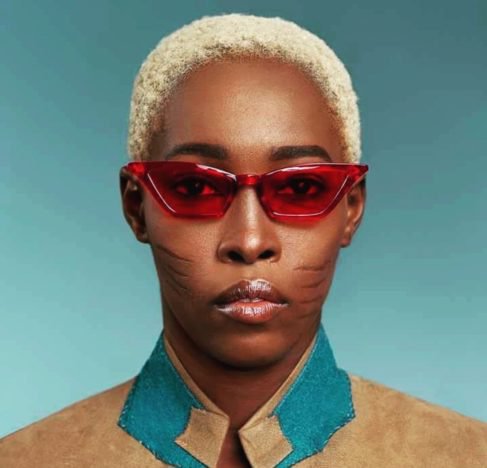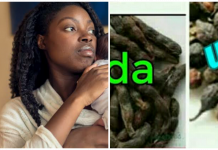Tribal marks (known as ilà in Yoruba language) in Nigeria have always been a significant part of our culture.
Today, you can still find some of the tribal marks worn by the Yorubas In places like Aswa in Egypt, Southern Sudan, Ethiopia, Berbers in Borno and Daura in Katsina state. Tribal marks have a rich and tortuous history and was done by our forebears for so many reasons – identification, recognition, beautification, religious, spiritual protection, healing purposes
If you look deeply into history, the practice of tribal marks has been in existence for hundreds of years and they are not peculiar to Nigeria, not even Africa.

The location and position of the tribal mark’s inscription depends on the tribe and culture. The tribal marks could be inscribed on the breast, arm, lap or buttocks, but they are usually on the face.
According to Yoruba traditions, every child in Yoruba land is born into a patrilineal clan called “idile baba”. This clan share marks or “ila,” family name “oriki,” taboos and poetry. The children with facial marks are called Okola.
One of the most unusual meanings associated to tribal marks is connected to traditional healing practices.
Healers in some tribes mark children faces and bodies to help them to recover. It was used to treat children with measles, pneumonia, and convulsion.
This marking is performed only by professionally trained specialists called olóolà or akomola (akˆmˆlà) – the traditional surgeons have quick hands and are devotees of Ogun, the god of iron and usually have no other occupation.
The healing marks could be made on any part of the body. These marks are very small and often difficult to spot.
Types of Tribal marks in Yorubaland
1. PELE: PELE have different variants and common in Ile Ife. The variants includes; Pele Ife, Pele Ijebu, Pele Ijesha, Pele Akoko.
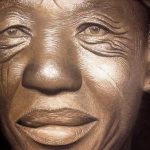
2. OWU: This is the indigenous type of mark for Owu in Abeokuta, Ogun State. You can find this facial mark on Chief Olusegun Obasanjo. It is also know as the Egba tribal mark
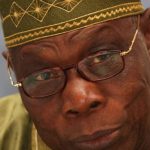
3. Gọmbọ: This tribal mark is indigenous to Ogbomosho.
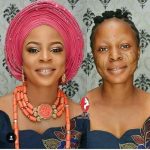
4. ABAJA: It is often referred to as “Abaja Alaafin Mefa Mefa”. This tribal mark is unique to the indigenes of Oyo, Nigeria. You can find this mark on HRM. Oba Lamidi Adeyemi III, the ALAAFIN of OYO.
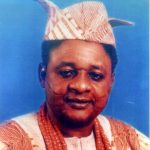
5. The Benin tribe called the marks “iwu” while the Hausa tribal marks were known as “zube”, “yan baka”, “doddori” and “bille”. The tribal mark well known for the Fulani tribe is the “kalangu”.
6. Other Yoruba tribal marks includes; Ture, Mande, Bamu and Jamgbadi, Soju, Jaju.
Prominent Yorubas (Nigerians) with Tribal marks
Prominent people with tribal marks include: Olusegun Obasanjo, Lamidi Adeyemi III, Ayo Fayose, Adegboyega Dosunmu Amororo II, Christopher Alao-Akala, Salihu Moddibo, Alfa Belgore, King Sunny Ade, Brymo, Sanyeri, Ladoke Akintola( Premier of the defunct Western Regional government), Kunle Afolayan and more.
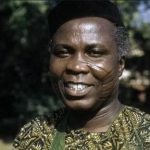
There is no perception that people with tribal marks are dim-witted or stupid, the whole thing is largely misunderstood, tribal marks used to be a mark of identity or nobility or royalty, it became outdated due to western civilization.
As western civilization penetrated Yoruba land, people started to dump certain cultural practices that do not align with western civilization, tribal marks happened to be one of those. The big Yoruba cities were the first to start dropping these practices.
As you all know civilization usually begins in the cities before it penetrates the villages. At some point, kids who were born in areas like Lagos,Ibadan central had a lower chance of having tribal marks than someone born in Ede or Oke Ogun.
So if a kid from Lagos saw someone with tribal marks at the time, he would know that this person probably just came in from rural villages and probably not savvy or exposed as he is as a Lagos boy who’s more accustomed to the newly adopted western civilization.
If a group were having a little argument then and someone tried to intimidate the other with sophistication or being more socially elite,the intimidated person might reply with “Shey mo k’ola ni” essentially meaning, you think I’m not exposed? You think I’m from the village.
Nowadays the meaning of “Shey mo k’ola ni” might be nuanced but I can assure you that the the origin had nothing to do with being naturally dim-witted or stupid…enough of the misconceptions.
The origin or history of tribal marks in Yoruba land
According to a Yoruba folklore on the origin of the ilà (tribal marks) as culled from Lolo Cynthia, one account was one of the past kings of Old Oyo Empire – Sango.
Some people say that Sango had sent 2 slaves and not a slave and a Tetu.
But anyway, the king wanted them to listen attentively to the first name to be called during the invocation as that would be the name of his mother.
After the healing of the scars, the Hausa slave appeared more handsome than before and King’s wives soon took notice and began to admire them.
The wives then suggested that such marks should not be made in slaves but on the royal family as a sign of royalty.
Negative Effects or Disadvantages of Tribal Marks
Like many children in the Yoruba community in Nigeria, Adetutu Alabi, now famed for the name: “model with tribal marks” was given scars on her face by her parents when she was young.
According to her, she has faced dehumanizing stigma and decriminalization from people even when they know she had no role to play in it. She said she however have no regrets about her body markings because it depicts her family’s tribal or ethnic heritage and was the norm as as then.
But with the custom becoming less common and the discrimination unbearable, Adetutu is calling for the total outlaw of the act.
Watch a 2 minutes interview below. ..
Osun State first to abolish tribal markings in Nigeria
Before now, in 2008, the Osun State House of Assembly passed a law prohibiting facial markings. This is the first and only state to pass such laws.
According to Section 24 of the law, “No person shall tattoo or make a skin mark or cause any tattoo or skin mark to be made on a child,” while Section 24 (2) said “A person who tattoos or makes a skin mark on a child commits an offence under this law and is liable on conviction to a fine not exceeding N5,000 or imprisonment for a term not exceeding one month or to both such fine and imprisonment.
In 2017, in a bid to prohibiting tribal markings, the Nigerian Senate had put machinery in motion towards outlawing marks on the faces of Nigerians as it passed for second reading.
The bill titled: “A Bill for an Act to provide for the Prohibition of Facial Mutilation, the Offences, Prosecution and Punishment of offenders and the protection of victims under threat of facial mutilation and to provide for other related Matters, 2017,” was sponsored by Senator Dino Melaye.
According to him: “I start this debate with tears in my eyes as I watch this picture showing a little boy undergoing facial mutilation, an act which this Bill seeks to abolish in this country.”
“You may wish to know that these facial imprints are carried out through the most excruciating pain with a knife or some sharp objects. The local surgeon begins his traditional journey deep into your flesh, leaving the victim in his pool of blood as he cuts through vertically and horizontally as the case may be on each side of the cheeks.”
The effect of the mark, according to him was that “it makes the victim a subject of mockery by friends and foes alike.”
He said “Imagine someone being called a “Tiger” simply because of stupendous stripped cheeks resulting from facial marks that he bears. “These marked individuals have been subjected to different stigma or discrimination by others and they have received these reactions from different perspectives.
“The infliction of tribal marks is an infringement on the rights of children which should be protected by this law.” He noted.
So many people called this bill a “welcome development” and long overdue.
Credits:
Mayowa
Lolo Cynthia
Video Credit: African News

















